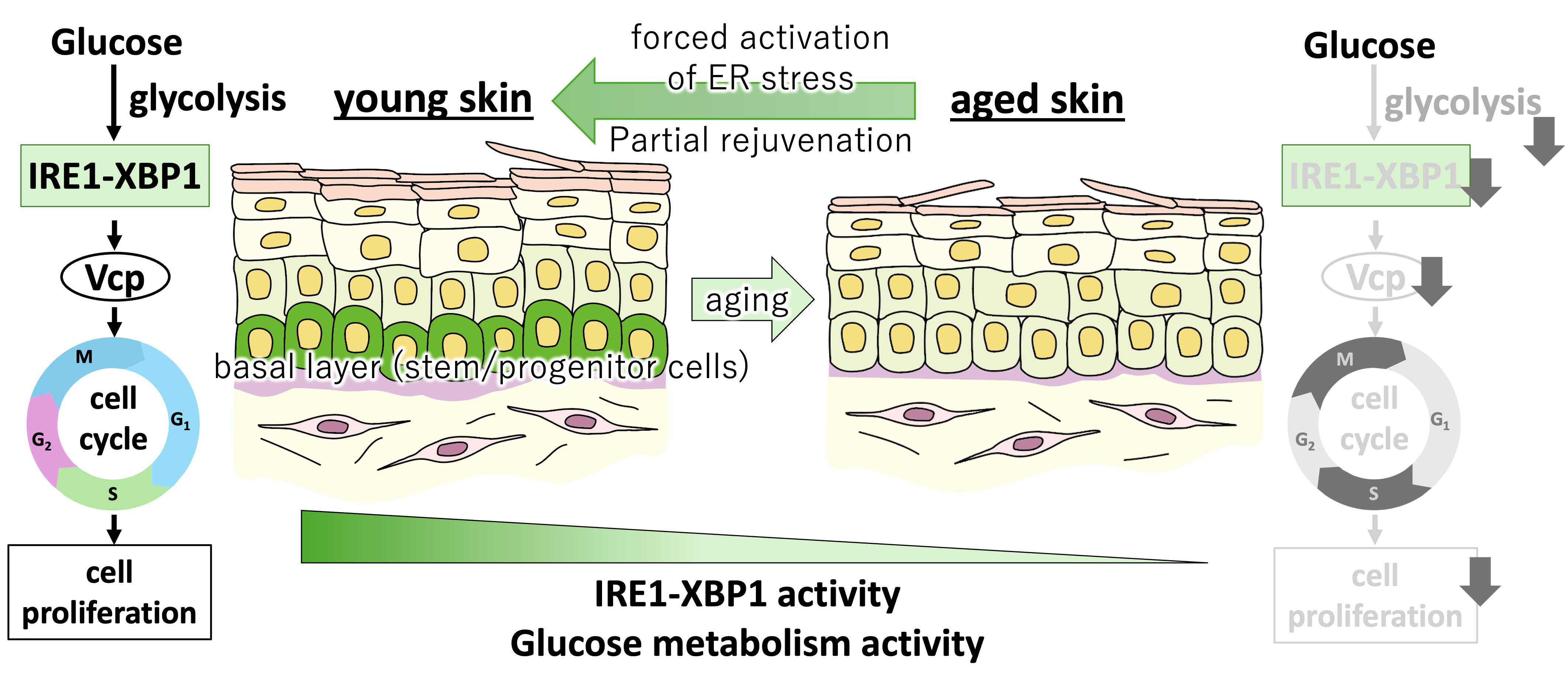ER Stress Pathway Keeps Skin Cells Young (Ishitani Lab, in Aging Cell)
The endoplasmic reticulum (ER) stress-response is an adaptive cellular mechanism activated by an accumulation of unfolded proteins within the ER. Although recent evidence shows that the ER stress-response is activated in aged tissues, and therefore ER stress is considered a candidate driver of aging, the spatiotemporal regulation and roles of the ER stress-response during aging remain unclear. To address this research gap, we introduced an Ire1-Xbp1s ER stress-response pathway-sensitive reporter into the ultra-short-lived vertebrate Nothobranchius furzeri that allows for the analysis of its aging processes within a short period of time. Using this reporter in N. furzeri, we confirmed the previously reported age-dependent activation of ER stress in various tissues and identified an unexpected role of the Ire1-Xbp1s ER stress-response pathway in regulating epidermal tissue homeostasis and aging. The Ire1-Xbp1s ER stress-response pathway is active in the young epidermal basal layer but declines with aging. Photo-isolation chemistry-based spatial transcriptomics and functional assays revealed that the Ire1-Xbp1s pathway maintains young epidermal cell proliferation by activating the cell cycle regulator Vcp, whereas the age-dependent decline in glucose metabolism reduces Ire1-Xbp1s activity, consequently downregulating cell proliferation. Collectively, our study elucidates a previously unidentified role of the ER stress-response in skin aging, which can offer insights into therapeutic targets for promoting healthy skin.
This article was published in Aging Cell, on Oct 12, 2025.
Title: “ER stress Ire1-Xbp1s pathway maintains youthful epidermal basal layer through the regulation of cell proliferation”
Authors: Daniel Semmy, Kota Abe, Mizuki Honda, Hiroko Omori, Shohei Ogamino, Tobias Clausen Mercurio, Kyosuke Asakawa, Emi K. Nishimura, Shinya Oki, Yasuyuki Ohkawa, and Tohru Ishitani
Links
- Home
- Achievement
- Research Activities
- ER Stress Pathway Keeps Skin Cells Young (Ishitani Lab, in Aging Cell)








